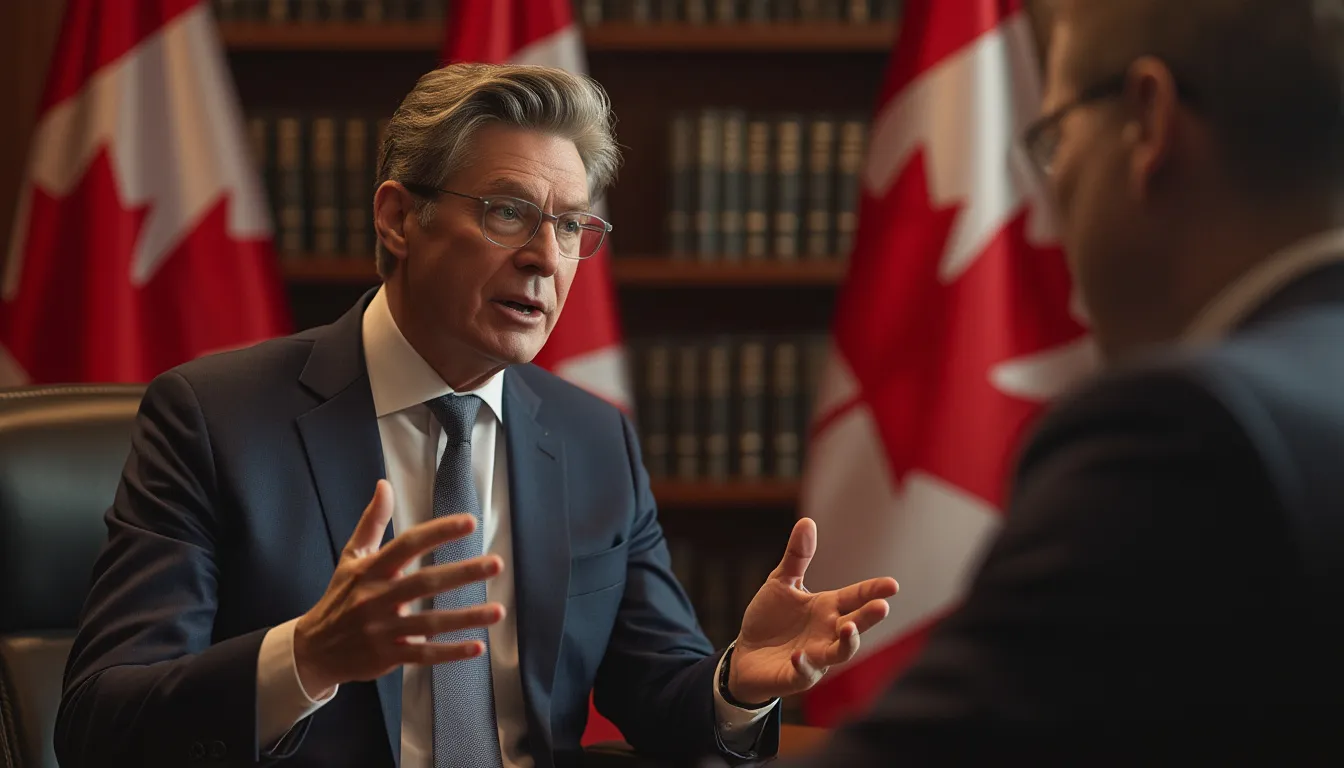Pierre Poilievre, leader of the Conservative Party of Canada, has unveiled a controversial proposal to drastically reduce the country’s annual immigration intake to 250,000 people. This plan, revealed during an exclusive interview on February 13, 2025, marks a significant departure from Canada’s current immigration levels, which have been steadily increasing in recent years.
Under Poilievre’s strategy, Canada would return to immigration numbers similar to those seen during the Stephen Harper era, which spanned from 2006 to 2015. The proposal is part of a broader effort to address pressing issues such as the housing crisis and public safety concerns. Poilievre argues that by limiting immigration, Canada can better manage its resources and ensure a more sustainable future for its citizens.
The plan has sparked intense debate across the political spectrum. Proponents argue that reducing immigration could help alleviate the country’s housing shortage and stabilize property prices. Critics, however, warn that such a move could harm Canada’s economy, which relies heavily on immigration to fill labor gaps and drive population growth.
At the heart of Poilievre’s proposal are five key pillars: reducing immigration numbers, addressing the housing crisis, enforcing stricter deportation policies, overhauling the refugee system, and selectively retaining certain illegal immigrants. These changes, if implemented, would represent a seismic shift in Canada’s approach to immigration and its role as a global destination for newcomers.
While the plan aims to balance population growth with housing availability, its success hinges on careful execution and public acceptance. As Canada grapples with the complexities of immigration, Poilievre’s proposal has ignited a national conversation about the country’s identity, economic needs, and humanitarian responsibilities.

Poilievre’s immigration strategy includes several key components designed to address Canada’s current challenges. First, he proposes reducing annual immigration levels to approximately 250,000, aligning with the levels seen during Stephen Harper’s tenure as Prime Minister from 2006 to 2015. This reduction aims to balance population growth with housing availability and resource management.
One of the central arguments for this policy is its potential to alleviate the housing crisis. Poilievre believes that lowering immigration levels could lead to a housing surplus within four years, potentially stabilizing or decreasing property prices and improving housing accessibility for Canadian citizens.
The plan also includes stricter deportation policies, advocating for the immediate deportation of non-citizens who commit crimes while in Canada on temporary visas. This policy is partly in response to incidents of violence during pro-Hamas protests, signaling a tougher stance on public safety and law enforcement.
Another significant aspect of the proposal is the overhaul of Canada’s refugee system. Poilievre has suggested implementing a “Last In, First Out” system for processing refugee claims. This approach aims to reduce false claims and address the backlog of applications, potentially saving on public expenditure while streamlining the process.
Despite advocating for stricter controls, Poilievre’s plan recognizes the value of retaining some illegal immigrants who have integrated well into Canadian society. Specifically, he highlights the importance of retaining skilled workers who contribute to tech hubs and other critical sectors, acknowledging the economic benefits they bring.
The proposed changes could have significant economic, political, and social implications. On the economic front, lower immigration levels might lead to short-term labor gaps unless domestic training or technological solutions are increased to fill the demand. Socially, a reduction in new arrivals could alter Canada’s cultural landscape, potentially affecting diversity and community cohesion. Politically, the policy might find favor among those concerned with housing affordability and public safety, but critics could argue it narrows Canada’s global appeal and humanitarian commitment.
Poilievre’s plan represents a significant shift in Canadian immigration strategy, aiming to balance population growth with housing availability and address the ongoing housing crisis. The success of this approach would depend on effective policy implementation, public acceptance, and the nuanced handling of economic and social changes.

Conclusion
Pierre Poilievre’s proposal to reduce Canada’s annual immigration intake to 250,000 people marks a significant shift in the nation’s approach to population growth and resource management. Aimed at addressing the housing crisis and public safety concerns, the plan has ignited a national debate. While supporters argue it could alleviate housing shortages and stabilize the economy, critics caution against potential economic drawbacks. The success of this strategy hinges on meticulous implementation and public acceptance, reflecting a broader discussion on Canada’s identity and responsibilities.
**FAQ**
How does Pierre Poilievre’s immigration proposal impact Canada’s economy?
Poilievre’s plan could lead to short-term labor gaps, potentially affecting economic growth. However, retaining skilled workers may mitigate these effects by maintaining contributions to critical sectors.
How does the proposed immigration level compare to current levels?
The proposal reduces annual immigration to 250,000, aligning with levels seen during the Stephen Harper era, compared to recent higher intake numbers.
How might the housing crisis be addressed under this plan?
The plan aims to balance population growth with housing availability, potentially leading to a housing surplus and stabilizing property prices within four years.
What happens to illegal immigrants under Poilievre’s plan?
The plan allows retaining illegal immigrants who are well-integrated, especially skilled workers in tech and other critical sectors, acknowledging their economic contributions.
How will the refugee system change?
A “Last In, First Out” system will be implemented to reduce false claims and streamline processing, aiming to address application backlogs efficiently.
How does the proposal address public safety?
Stricter deportation policies target non-citizens committing crimes, aiming to enhance public safety and law enforcement, as seen in responses to incidents during protests.
What are the political implications of this proposal?
The plan may appeal to those concerned with housing affordability and safety but could also narrow Canada’s global appeal and humanitarian role, sparking political debate.





No comment